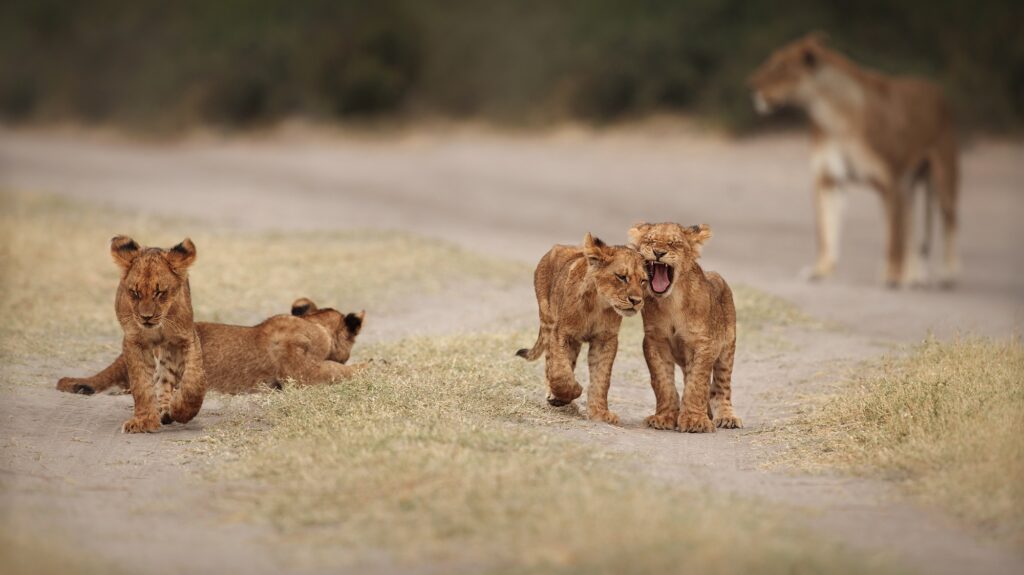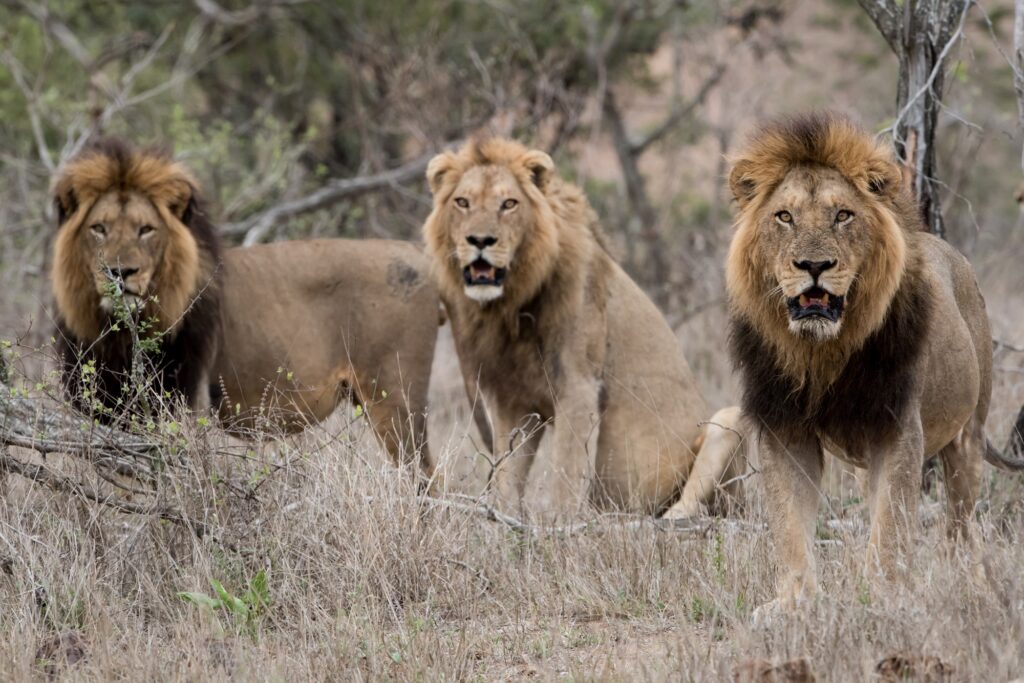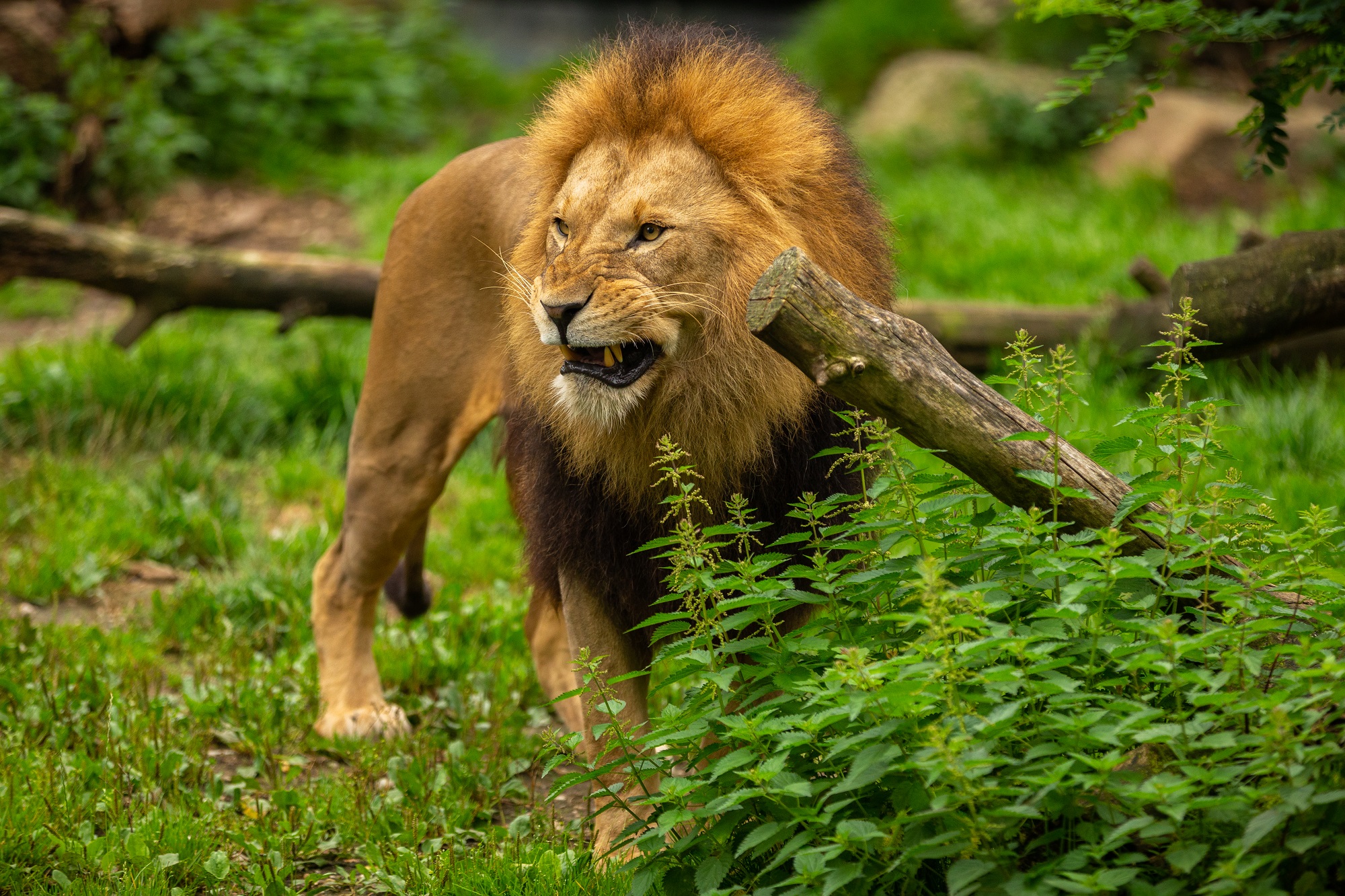The origins of the Barbary lion can be traced even further to the broader history of lion evolution. Lions (Panthera leo) as a species have a deep and complex evolutionary history. They are believed to have originated in Africa around 124,000 to 190,000 years ago. Over time, different populations of lions adapted to various regions, resulting in the development of distinct subspecies.
The Barbary lion, Panthera leo leo, was one of these subspecies. Its unique characteristics and adaptations were shaped by the specific environment of the Atlas Mountains region in North Africa. These lions evolved to thrive in the rugged terrain, dense forests, and varied landscapes of the Atlas Mountains. Their larger size, dark manes, and pelage coloration were likely adaptations to this specific environment.
Furthermore, the Barbary lion’s historical significance in the culture and mythology of the Berber people added to its unique identity. It was not only a product of its environment but also a symbol of strength and reverence in the cultural heritage of North Africa. Despite their extinction in the wild, the origins of the Barbary lion are deeply rooted in the natural history and cultural tapestry of the region, making them a subject of fascination and conservation efforts to this day.
Table of Contents
The Enigmatic Barbary Lion
The Barbary lion, scientifically known as Panthera leo leo, is a distinct subspecies celebrated for its regal appearance and robust size. Bold, majestic, and once native to the Atlas Mountains of North Africa, this subspecies is a symbol of strength and fascination.



Reproduction and Life Cycle
The reproduction and life cycle of the Barbary lion, Panthera leo leo, followed a pattern similar to that of other lion subspecies. These lions typically reached sexual maturity at around 3 to 4 years of age. Once mature, males and females engaged in courtship behaviors, which included vocalizations, nuzzling, and affectionate interactions. Mating usually occurred within the pride, and a dominant male would often monopolize mating opportunities with lionesses. However, in some cases, coalition males might share mating rights within a pride.
Gestation for female Barbary lions lasted approximately 100 to 110 days, resulting in the birth of a litter of cubs. Lionesses usually gave birth to 2 to 4 cubs, although larger litters were not uncommon. Cubs were born blind and helpless, relying entirely on their mother’s care for survival. The lionesses within the pride often cooperated in raising and nursing the cubs, creating a support system that increased the chances of the cubs’ survival.
As the cubs grew, they began to eat solid food at around three months of age, although they continued nursing for several more months. Barbary lion cubs were playful and curious, engaging in mock hunting and social interactions that helped develop their hunting skills and social bonds. Around 18 to 24 months of age, they started to accompany the pride on hunts and gradually became more independent. The life cycle of Barbary lions, sadly, has been interrupted due to their extinction in the wild, making it crucial to study and preserve their genetic legacy in captivity.
Rise and Fall
Centuries ago, the Barbary lion reigned supreme as the apex predator of North Africa. Revered by the Berber people, it held a significant place in their culture and mythology. However, as the world evolved, the Barbary lion, faced an alarming decline.
Facing Extinction
The 19th and 20th centuries witnessed the darkest period in the Barbary lion’s history. Habitat loss due to human encroachment, relentless hunting, and conflicts pushed this majestic creature to the brink of extinction. By the mid-20th century, the Barbary lion had vanished from the wild, leaving only a few in captivity.
The Miracle of Survival
Just when hope seemed lost, a glimmer of hope emerged. Dedicated conservationists and wildlife enthusiasts embarked on a mission to save the Barbary lion. Their relentless efforts led to the discovery of surviving individuals in captivity, rekindling the hope for their revival.
A New Beginning
The identification of Barbary lions in captivity marked the dawn of a new era. Ambitious breeding and reintroduction programs aimed to increase their numbers and reintroduce them to their natural habitat. The story of the Barbary lion’s triumphant return had begun.
Social Behavior
In terms of social hierarchy, the dominant male played a crucial role in leading the pride. His responsibilities included protecting the pride’s territory from intruders and ensuring the safety of the cubs. Lionesses, on the other hand, were the primary hunters. They worked together in coordinated efforts to bring down prey, showcasing their remarkable teamwork. Younger lions learned essential hunting and social skills from their elders, promoting the transfer of knowledge and cooperation within the pride.
Communication was vital to Barbary lions’ social cohesion. They communicated through vocalizations such as roars, which helped them establish territorial boundaries and coordinate activities. Additionally, physical contact, such as grooming and nuzzling, reinforced social bonds within the pride. Tragically, the Barbary lion is now extinct in the wild due to habitat loss and overhunting. Nonetheless, studying their social behavior provides valuable insights into the intricate dynamics of this magnificent big cat subspecies.



Conservation Efforts
In the quest to revive, numerous organizations and individuals played pivotal roles in preserving their genetic legacy through captive breeding programs. These programs aim to increase the genetic diversity of captive Barbary lions and potentially reintroduce them into their native habitats if suitable conditions can be re-established.
Furthermore, conservationists have been focusing on raising awareness about the historical significance of Barbary lions and their role in North African ecosystems. Public education and support for conservation efforts are crucial to ensure the long-term survival of this subspecies. International organizations, zoos, and wildlife authorities have played significant roles in coordinating these efforts, emphasizing the importance of preserving the Barbary lion’s genetic heritage as a part of global biodiversity conservation.
Challenges Ahead
While the Barbary lion’s resurgence is heartening, it is not without its challenges. Habitat restoration, genetic diversity, and continued protection are essential components of ongoing conservation efforts. The journey to secure the Barbary lion’s future is far from over.
The Call to Action
The Barbary lion’s story serves as a poignant reminder of the impact of human actions on the natural world. It inspires us to come together with determination and passion to reverse the damage to our planet’s treasures. This remarkable resurgence of the Barbary lion calls for collective action and renewed dedication to conservation efforts.
The Global Significance
The Barbary lion’s revival is not only a local triumph but holds global significance. It symbolizes the possibility of redemption and the resilience of our planet’s biodiversity. This awe-inspiring tale resonates with people worldwide, drawing attention to the importance of preserving endangered species.
Conclusion
In conclusion, the Barbary lion’s journey from the edge of extinction to triumph is a testament to the power of human determination and the indomitable spirit of nature. This subspecies, once on the verge of vanishing forever, has been given a second chance at life through concerted conservation efforts.
As we reflect on this incredible story, it is a reminder that our actions can shape the destiny of the natural world. The Barbary lion’s resurgence is a beacon of hope, inspiring us to protect and preserve the diverse and precious species that share our planet.
In the face of adversity, the Barbary lion stands tall, a symbol of strength and resilience. Its tale of triumph is not only a celebration of its survival but a call to action for us all. Together, we can ensure that the Barbary lion continues to roar in

